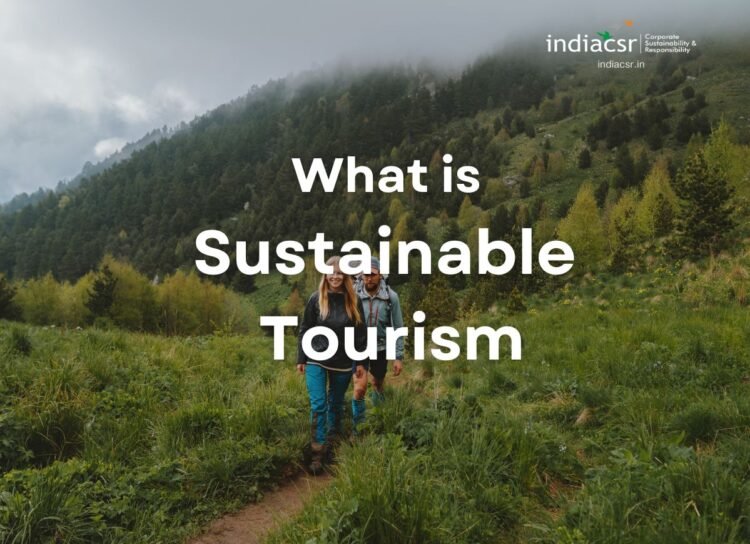Sustainable tourism represents a trajectory towards enhanced well-being for the tourism sector, the environment, and indigenous communities.
Sustainable tourism is a type of tourism that takes into account the environmental, social, and economic impacts of tourism activities. It is a tourism that meets the needs of the present without compromising the ability of future generations to meet their own needs. Sustainable tourism is important because it can help to protect the environment, improve the lives of local people, and benefit the local economy. It can also help to create a more positive image of tourism and make it more attractive to both tourists and investors.
Elevating Global Tourism: Embracing Sustainability and Eco-Consciousness
Sustainable tourism is a vital aspect of the global tourism industry. It aims to promote eco-friendliness and sustainability in tourism practices, thereby ensuring that the industry benefits both humanity and the planet. The United Nations World Tourism Organization (UNWTO) has introduced innovative tools to amplify the impact of tourism policies and efforts on the Sustainable Development Goals (SDGs). The Leaders’ Declaration, unveiled during the G20 economies gathering under India’s presidency, recognizes tourism’s potential in realizing the SDGs.
The Principles of Sustainable Tourism
Sustainable tourism is based on three main principles:
1. Environmental protection
Sustainable tourism should minimize the negative environmental impacts of tourism activities. This can be done by reducing energy consumption, water consumption, and waste production. It can also be done by protecting natural resources and biodiversity.
2. Social responsibility
Sustainable tourism should benefit local communities. This can be done by providing jobs and training, supporting local businesses, and respecting local cultures and traditions.
3. Economic sustainability
Sustainable tourism should be economically viable. This means that it should generate enough revenue to cover the costs of tourism activities and to provide a benefit to the local economy.
***
The Benefits of Sustainable Tourism
Sustainable tourism is important because it can help to protect the environment, improve the lives of local people, and benefit the local economy. It can also help to create a more positive image of tourism and make it more attractive to both tourists and investors.
There are many benefits to sustainable tourism. These include:
1. Environmental protection
Sustainable tourism can help to protect the environment by reducing energy consumption, water consumption, and waste production. It can also help to protect natural resources and biodiversity.
2. Social benefits
Sustainable tourism can benefit local communities by providing jobs and training, supporting local businesses, and respecting local cultures and traditions.
3. Economic benefits
Sustainable tourism can be economically viable by generating enough revenue to cover the costs of tourism activities and to provide a benefit to the local economy.
***
How to Make Tourism More Sustainable
There are a number of things that can be done to make tourism more sustainable. These include reducing energy consumption, reducing water consumption, reducing waste production, protecting natural resources, and supporting local communities.
There are a number of things that can be done to make tourism more sustainable. These include:
1. Reducing energy consumption
Tourism businesses can reduce their energy consumption by using energy-efficient appliances and lighting, and by weatherizing their buildings.
2. Reducing water consumption
Tourism businesses can reduce their water consumption by installing water-efficient fixtures and by recycling water.
Reducing waste production: Tourism businesses can reduce their waste production by recycling and composting. They can also use reusable products instead of disposable products.
3. Protecting natural resources
Tourism businesses can protect natural resources by using sustainable practices such as land management and water management. They can also support conservation efforts.
4. Supporting local communities
Tourism businesses can support local communities by hiring local people, buying local products, and working with local businesses. They can also respect local cultures and traditions.
Examples of Sustainable Tourism
There are many examples of sustainable tourism around the world. Here are a few:
- Ecotourism: Ecotourism is a type of sustainable tourism that focuses on responsible travel to natural areas. Ecotourism businesses typically support conservation efforts and benefit local communities.
- Agrotourism: Agrotourism is a type of sustainable tourism that focuses on travel to farms. Agrotourism businesses typically offer visitors the opportunity to learn about agriculture and experience rural life.
- Cultural tourism: Cultural tourism is a type of sustainable tourism that focuses on travel to experience different cultures. Cultural tourism businesses typically support local culture and traditions.
Here are some examples of sustainable tourism:
Ecotourism: Ecotourism is a type of sustainable tourism that focuses on responsible travel to natural areas. Ecotourism businesses typically support conservation efforts and benefit local communities. Some examples of ecotourism activities include:
- Wildlife watching
- Hiking and trekking
- Camping
- Birdwatching
- Snorkeling and diving
Agrotourism: Agrotourism is a type of sustainable tourism that focuses on travel to farms. Agrotourism businesses typically offer visitors the opportunity to learn about agriculture and experience rural life. Some examples of agrotourism activities include:
- Farm tours
- Farm stays
- Cooking classes
- Food festivals
- Volunteer opportunities
Cultural tourism: Cultural tourism is a type of sustainable tourism that focuses on travel to experience different cultures. Cultural tourism businesses typically support local culture and traditions. Some examples of cultural tourism activities include:
- Visiting museums and historical sites
- Attending cultural festivals and events
- Taking cooking classes
- Learning the local language
- Volunteering with local organizations
More examples of sustainable tourism
These are just a few examples of the many ways to practice sustainable tourism. By choosing sustainable tourism options, travelers can help to protect the environment, support local communities, and have a more positive impact on the places they visit.
Responsible travel to urban areas: This can involve staying in eco-friendly hotels, eating at local restaurants, and using public transportation.
Volunteering tourism: This type of tourism involves volunteering with local organizations to make a positive impact on the community.
Community-based tourism: This type of tourism involves staying with local families or in community-owned guesthouses. This helps to support local communities and provide a more authentic cultural experience for visitors.
How you can Contribute to a Greener Journey
Practical Tips for Sustainable Tourism
There are several ways to contribute to sustainable tourism. Here are some tips:
Choose eco-friendly accommodations: Look for hotels and resorts that have implemented sustainable practices such as water conservation, energy efficiency, and waste reduction. You can also opt for eco-lodges, homestays, or camping sites that have a lower environmental impact.
Support local businesses: When you travel, try to support local businesses such as restaurants, shops, and tour operators. This helps to boost the local economy and preserve the cultural heritage of the destination.
Reduce your carbon footprint: You can reduce your carbon footprint by choosing eco-friendly modes of transportation such as cycling, walking, or taking public transport. If you need to fly, consider offsetting your carbon emissions by investing in carbon credits.
Respect the local culture and environment: Be mindful of the local customs and traditions when you travel. Respect the natural environment by not littering or damaging the flora and fauna.
Educate yourself: Learn about the local culture, history, and environment of the destination you are visiting. This will help you to appreciate the place more and make informed decisions about your travel choices. By following these tips, you can contribute to sustainable tourism and help to preserve our planet for future generations.
***
Sustainable Tourism: Role of Business
By implementing sustainable tourism practices, businesses can help to protect the environment, support local communities, and benefit the economy. They can also communicate their commitment to sustainable tourism to their customers, employees, and stakeholders.
Sustainable tourism is a crucial aspect of the global tourism industry, aiming to promote eco-friendliness and sustainability in tourism practices. This ensures that the industry benefits both humanity and the planet. The triple bottom line model is often used to balance between people, planet, and profit. Businesses can write a Responsibility Statement outlining their sustainable activities to communicate their commitment to sustainable tourism.
In other words, sustainable tourism is a way of traveling that minimizes the negative impact on the environment, local communities, and the economy. It is about finding a balance between the needs of the present and the needs of the future.
The ‘triple bottom line model‘ is a framework for businesses to measure their performance in three areas: people, planet, and profit. This model helps businesses to consider the social and environmental impacts of their activities, as well as their financial performance.
Responsibility Statement
A Responsibility Statement is a document that outlines a business’s commitment to sustainable tourism. It should describe the business’s sustainable practices and goals. It can also be used to communicate the business’s commitment to sustainable tourism to its customers, employees, and stakeholders.
Here are some examples of sustainable tourism practices that businesses can implement:
- Reducing energy consumption: This can be done by using energy-efficient appliances and lighting, and by weatherizing buildings.
- Reducing water consumption: This can be done by installing water-efficient fixtures and by recycling water.
- Reducing waste production: This can be done by recycling and composting, and by using reusable products instead of disposable products.
- Protecting natural resources: This can be done by using sustainable practices such as land management and water management. It can also be done by supporting conservation efforts.
- Supporting local communities: This can be done by hiring local people, buying local products, and working with local businesses. It can also be done by respecting local cultures and traditions.
You learned
Sustainable tourism is a type of tourism that takes into account the environmental, social, and economic impacts of tourism activities. It is tourism that meets the needs of the present without compromising the ability of future generations to meet their own needs.
Also Read: Japan: Hatsukaichi Implements Tourist Tax In City To Promote Sustainable Tourism I India CSR
(Copyright @ India CSR)






